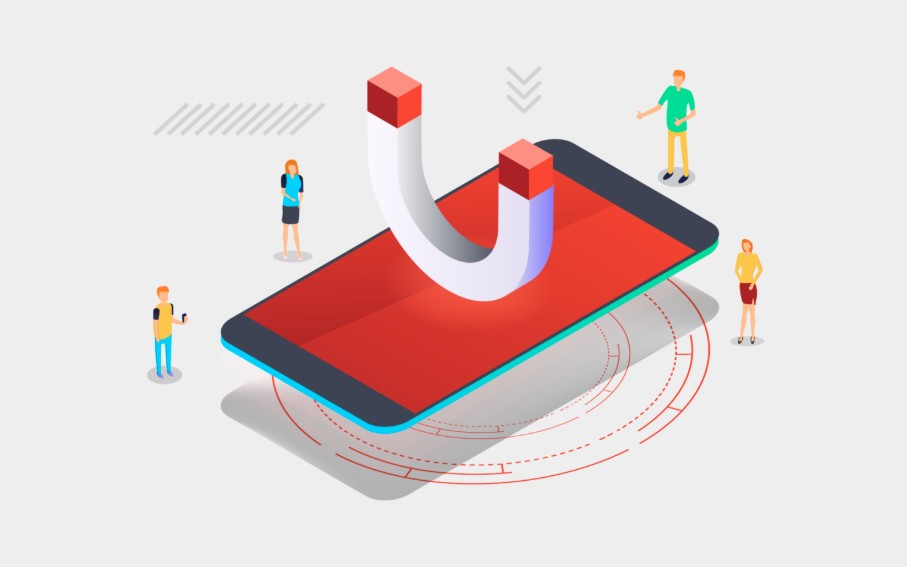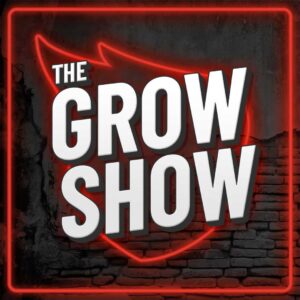Picking up the phone to call a total stranger isn’t easy, and that’s exactly why cold calling separates average reps from elite performers. It’s part science, part art, and all about starting conversations that lead to closed deals.
Cold calling isn’t dead. It’s misunderstood. When done right, it becomes one of the most powerful tools in your sales arsenal. In this guide, we’ll break down everything you need to know from prepping your pitch to handling objections and landing the meeting so you can turn those dials into dollars.
Contents
- 1 What is Cold Calling?
- 2 Should I Prepare Before Making Cold Calls?
- 3 How Should I Approach Each Cold Call?
- 4 I Made My First Cold Call… Now What?
- 5 What are the Best Tools and Resources for Effective Cold Calling?
- 6 How Do I Measure Cold Calling Success?
- 7 How Can I Overcome Cold Calling Challenges?
- 8 Final Thoughts
What is Cold Calling?
Cold calling (or “telemarketing”) is a proactive sales technique in which a representative contacts a potential buyer who has not previously expressed interest. It’s a high-impact communication strategy rooted in psychology, timing, and message relevance. The objective is to start a meaningful conversation, build trust, and present your solution as a value-add, not an interruption.
Why Do People Cold Call?
At its core, cold calling is about lead generation. It’s a direct way to identify and engage with potential customers that fit your ideal profile. Instead of waiting for prospects to find you, cold calling puts your team in control of the pipeline.
Cold calling also uncovers market intelligence. Your conversations reveal real-time insights into customer pain points, decision-making processes, and industry trends. That feedback loop fuels stronger sales messaging, product innovation, and higher conversion rates.
What are Some Common Misconceptions About Cold Calling?
“Cold calling is outdated.”
Not even close. Cold calling still ranks among the top three most effective B2B lead generation strategies. While digital channels are powerful, nothing beats the speed and clarity of a live conversation, especially when you need immediate engagement.
“Cold calling doesn’t work.”
It works when it’s done right. With a targeted list, a relevant message, and the right timing, cold calling delivers results that many digital efforts can’t touch. It cuts through the noise and starts real business conversations.
“Cold calling is just a numbers game.”
Volume matters, but quality wins. Success depends on the depth of each interaction, not just the number of dials. Top reps focus on personalization, active listening, and solving real problems, not rattling off a pitch.
Keep Reading: Explore Cold Call Success Rates
Should I Prepare Before Making Cold Calls?
Yes! You should absolutely prep before making cold calls. Preparation is what transforms cold outreach into strategic, high-conversion conversations. The most effective cold callers don’t wing it. They build a game plan grounded in research, messaging, and mindset.
Research Your Prospects
Cold calling without research is like stepping into a sales meeting blind. Knowing your prospect’s industry, challenges, and recent business developments gives you the context needed to make your outreach relevant and credible from the first word.
Use these research sources to uncover details that make your pitch personal and relevant:
- LinkedIn – Find job titles, recent posts, mutual connections, and engagement signals.
- Company websites – Look for mission statements, service offerings, and executive bios.
- Press releases – Spot new product launches, funding rounds, partnerships, or leadership changes.
- Industry publications – Gain insight into market trends, competitive positioning, and current challenges.
Look for clues like:
- What vertical are they in?
- What are their current growth priorities?
- Have they launched something new or made a big move recently?
Don’t stop at company-level research. Identify the right decision-maker. Reaching out to someone who lacks buying authority wastes time and slows down your sales cycle. Target roles aligned with your solution and tailor your message to their unique pain points and KPIs.
Read More: Tips to Improve Prospecting
Craft Your Script (or “Talk Track”)
A script is a great tool to have under your cold calling belt. We call it a “talk track” because it guides the conversation without controlling it. Talk tracks are flexible outlines that help you stay focused while sounding natural and confident, not scripted.
Start strong. The first 10 seconds matter. Introduce yourself, build quick credibility, and lead with a clear value proposition tied to the prospect’s world. Include open-ended questions to create real dialogue. Ask things like, “How are you currently handling [pain point]?” or “What’s your top priority this quarter?”
Your script should never be read word for word, so use it as a foundation. Remember to stay alert, actively listen, and adjust commentary based on the prospect’s response.
Don’t guess your way through the first 30 seconds—master them. Download our free Cold Calling Talk Track Template and learn how to structure your calls for better conversations, more engagement, and higher conversions.
Have the Right Mindset and Attitude
Cold calling comes with rejection, and your mindset determines how well you bounce back.
Set realistic expectations. Focus on what you can control: quality conversations, clear messaging, and handling objections. Track progress and celebrate small wins. Each “no” brings you closer to a “yes.”
Treat rejection as feedback, not failure. Review calls to find what worked and what needs adjusting. Role-play common scenarios to build confidence and improve under pressure.
Read More: Cold Calling Tips Sales Reps Must Follow
How Should I Approach Each Cold Call?
You should approach each cold call as a structured conversation with a purpose. Your goal is to create a connection, deliver value, and move the prospect closer to the next step. With prep complete, it’s time to shift from planning to performance. This is where tone, timing, and delivery determine whether the lead stays cold or starts warming up.
Building Rapport
Cold calling is a skill that improves with practice. Rehearse your script and delivery to ensure you’re comfortable and confident when speaking to prospects. Record your practice calls or work with a colleague to simulate real scenarios. Practicing your delivery allows you to refine your tone, pacing, and overall approach, helping you come across as more polished and professional during actual calls.
Handling Objections
Objections aren’t a dead end; they’re a signal that the prospect is thinking it through. Your job is to stay calm, validate the concern, and guide the prospect forward.
- Use “feel, felt, found” – Empathize, share a relatable experience, and highlight a positive outcome.
- Respond with confidence – Show you’ve been here before and know how to deliver value.
- Log objections – Keep a running list of what you hear and what works. Build a response playbook.
- Avoid defensiveness – Objections aren’t personal. Stay solution-focused.
Closing the Deal
Don’t dance around the ask. A clear close sets expectations and moves the conversation forward.
- Define the next step – Whether it’s a meeting, demo, or follow-up, make it easy and direct.
- Use soft-close language – Ask “Does this sound like something worth exploring?” to keep momentum.
- Gauge readiness – Not everyone is ready to buy today. That’s fine—set a future touchpoint.
- Keep the door open – A “not now” can still turn into pipeline when handled professionally.
Related Articles:
I Made My First Cold Call… Now What?
The conversation’s over—but the real work is just getting started. What you do next separates sales reps from sales pros. Post-call strategy is where momentum turns into meetings, and follow-through becomes pipeline. Here’s how to execute after the call.
Follow-Up Techniques
Following up keeps the conversation alive. Do it well, and you’ll stay top of mind and move the deal forward.
- Send a thank-you email. Short. Clear. Polite. Reinforce the connection you just made.
- Recap the call. Summarize what was discussed, outline next steps, and include helpful resources.
- Personalize it. Mention something specific they said. Reference a challenge, product feature, or initiative they care about.
- Time it right. Follow up too fast, and it’s pushy. Wait too long, and you lose momentum. Aim for the same day or the next morning.
- Add value. Don’t just check in. Share something useful—a case study, article, or insight relevant to their goals.
Tracking Progress
What gets tracked gets improved. Your call data tells the story if you’re listening.
- Use your CRM. Log every detail of call outcomes, objections, follow-up dates, and key takeaways.
- Track meaningful metrics. Focus on conversion rates, number of follow-ups, call-to-meeting ratios, and average time to close.
- Spot patterns. Which talk tracks work best? What times get the most pickups? Where are deals stalling?
- Refine your playbook. Use what’s working to update messaging, adjust timing, and coach your team.
Read More: Using Data to Improve Cold Calling
Continuous Improvement
Cold calling is a skill, and like any skill, it sharpens with practice, feedback, and coaching.
- Review your calls. Listen to recordings. Identify what you nailed and where you missed.
- Role-play regularly. Practice objection handling, tone, and transitions with your team.
- Stay current. Follow sales trends, learn new techniques, and test what’s working in the market.
- Invest in training. Webinars, workshops, and courses keep building your toolbox.
- Learn from others. Join communities, connect with top reps, and exchange real-world tactics.
The real pros don’t stop after the call—they follow up with purpose, track what worked, and keep improving. Our Cold Calling Best Practices Guide gives you the exact playbook to build momentum after that first dial.
What are the Best Tools and Resources for Effective Cold Calling?
The best cold calling tools help you stay organized, analyze performance, and continuously improve. With the right stack, your reps can move faster, communicate better, and close more.
Here’s what belongs in every high-performing cold calling toolkit:
CRM Systems
You can’t scale what you don’t track. A solid CRM helps you manage leads, monitor activity, and stay in front of the right people at the right time.
- Salesforce – Best for enterprise teams that need deep customization and automation.
- HubSpot – Great for small to midsize teams with a clean interface and built-in sales tools.
- Zoho CRM – Affordable, all-in-one platform with sales and marketing features for growing businesses.
Call Tracking Software
You need to know what’s working and what’s not. Call tracking software gives you the insight to optimize your approach and coach your team in real time.
- CallTrackingMetrics – Built for performance-driven teams with advanced routing and reporting tools.
- CallRail – User-friendly platform with robust tracking, call recording, and analytics.
- RingCentral Engage Voice – Combines call center functionality with detailed call tracking for outbound teams.
Training Resources
Cold calling isn’t a “set it and forget it” skill. The best reps train like athletes: constantly improving, refining, and evolving.
- LinkedIn Learning – Industry-recognized training on prospecting, objection handling, and closing.
- Udemy – Budget-friendly courses for all experience levels, from cold call basics to advanced strategy.
- Gong Labs – Real-world call data and insights to learn from what top-performing reps actually say.
Your tech stack should fit your sales process, not the other way around. Choose tools that work with your team’s workflow and ensure everyone knows how to use them to their full potential.
At Abstrakt, we’ve built the best outbound engine in the business, with top-tier talent, proven processes, and cutting-edge tech. Our B2B appointment setting services deliver consistent results for 1/3 the cost of building an in-house team.
How Do I Measure Cold Calling Success?
You measure cold calling success by tracking the right KPI metrics that tie effort to outcomes and show you what’s working, what’s not, and where to optimize.
The best sales teams treat KPIs like a scoreboard. Here’s what you should be watching:
Key Performance Indicators (KPIs)
To turn activity into revenue, focus on the metrics that matter:
- Call Volume – Total number of outbound calls made in a given timeframe. Consistency fuels pipeline.
- Connection Rate – Percentage of calls that reach a live person. Higher connection = more opportunities.
- Conversation Rate – Percentage of calls that lead to meaningful dialogue, not just a pickup.
- Meeting Set Rate – Number of conversations that result in a booked next step.
- Lead-to-Opportunity Conversion – Tracks how many cold leads turn into qualified pipeline.
- Follow-Up Ratio – Measures how often reps schedule and complete follow-ups post-call.
- Objection Rate – Tracks frequency and types of objections to inform messaging strategy.
- Call Duration – Helps gauge call quality and engagement. Short calls? Something’s off.
- Response Time – How quickly follow-ups or callbacks happen. Speed signals professionalism.
- Best Time to Call – Tracks time-of-day performance to optimize calling windows.
Evaluating Effectiveness
KPIs are your guide, but context makes them powerful. Evaluate calls with a mix of numbers and nuance:
- Review call recordings. Listen for tone, flow, and how well reps handle objections or build rapport.
- Identify patterns. What do successful calls have in common? Use that insight to coach and replicate.
- Analyze losses. Don’t just track wins—look at missed opportunities. Are pricing objections common? Is the pitch too long?
- Test and refine. Adjust scripts, timing, or talk tracks based on performance trends.
- Use role-play. Turn real-world failures into training tools. Reps who practice pressure perform better under it.
How Can I Overcome Cold Calling Challenges?
You overcome cold calling challenges by facing them head-on with the right mindset, strategy, and tools to turn obstacles into opportunities. From constant rejection to disengaged prospects, every rep runs into resistance. The difference between average and elite performers is how they respond.
Challenge: Dealing with Rejection
Rejection is the norm, not the exception, in cold calling. Hearing “no” (or nothing at all) can be frustrating, but it doesn’t have to derail your day. It’s part of the process, not a reflection of your value.
How to Overcome It:
- Reframe rejection as data. Every no tells you something—timing, messaging, targeting.
- Keep perspective. Success in cold calling is a numbers game and a mindset game.
- Build a routine. Schedule regular breaks, stay hydrated, and reset between calls to avoid burnout.
- Track progress beyond just wins. Calls were made, conversations started, and follow-ups booked. Celebrate all forward motion.
Challenge: Maintaining Prospect Engagement
Getting someone on the phone is hard, but keeping them there is harder. Prospects are busy, distracted, and skeptical. You have seconds to earn their attention and minutes to make it matter.
How to Overcome It:
- Lead with relevance. Make the first sentence about them, not you. Why should they care right now?
- Ask open-ended questions. Dialogue beats monologue. Get them talking about their world.
- Use storytelling. Real success stories show how you solve real problems.
- Match their tone and energy. People connect with people who sound like them.
Final Thoughts
Cold calling isn’t just a sales tactic; it’s a growth engine. When done right, it opens doors, builds relationships, and fills your pipeline with real opportunities. Master the fundamentals. Prep like a pro. Execute with purpose. That’s how cold calls turn into warm leads and closed deals.
Challenges? You’ll face them. But the top performers don’t shy away—they adapt, improve, and keep dialing. With the right mindset, the right tools, and a commitment to constant refinement, anyone can succeed in cold calling. Stay coachable. Stay consistent. And keep driving the conversation forward.
Take Your Cold Calling to the Next Level with Abstrakt
If you’re ready to turn cold calling into a reliable, scalable lead generation machine, Abstrakt has your back. We’ve helped thousands of businesses build outbound programs that actually work because we combine proven strategy with execution that gets results.
Learn how Abstrakt can grow your pipeline with outsourced appointment setting →

Madison Hendrix
Madison has worked in SEO and content writing at Abstrakt for over 5 years and has become a certified lead generation expert through her hours upon hours of research to identify the best possible strategies for companies to grow within our niche industry target audiences. An early adopter of AIO (A.I. Optimization) with many organic search accolades - she brings a unique level of expertise to Abstrakt providing helpful info to all of our core audiences.
- Madison Hendrix
- Madison Hendrix





